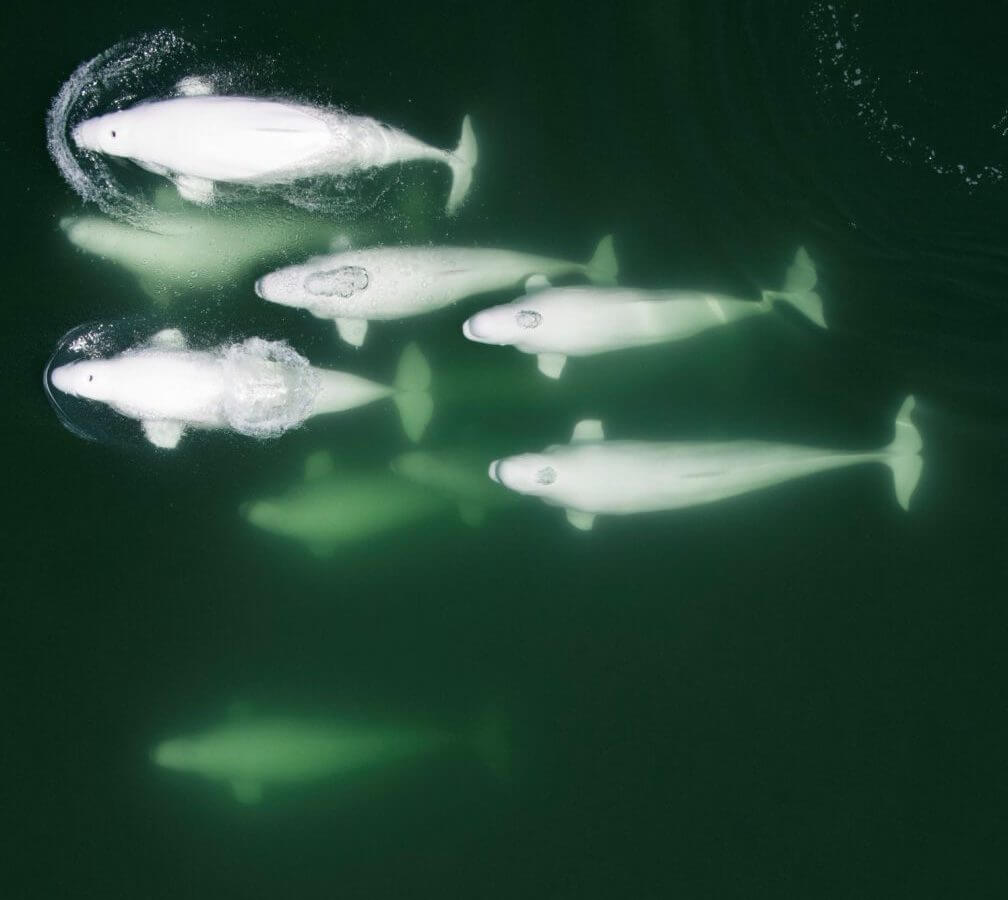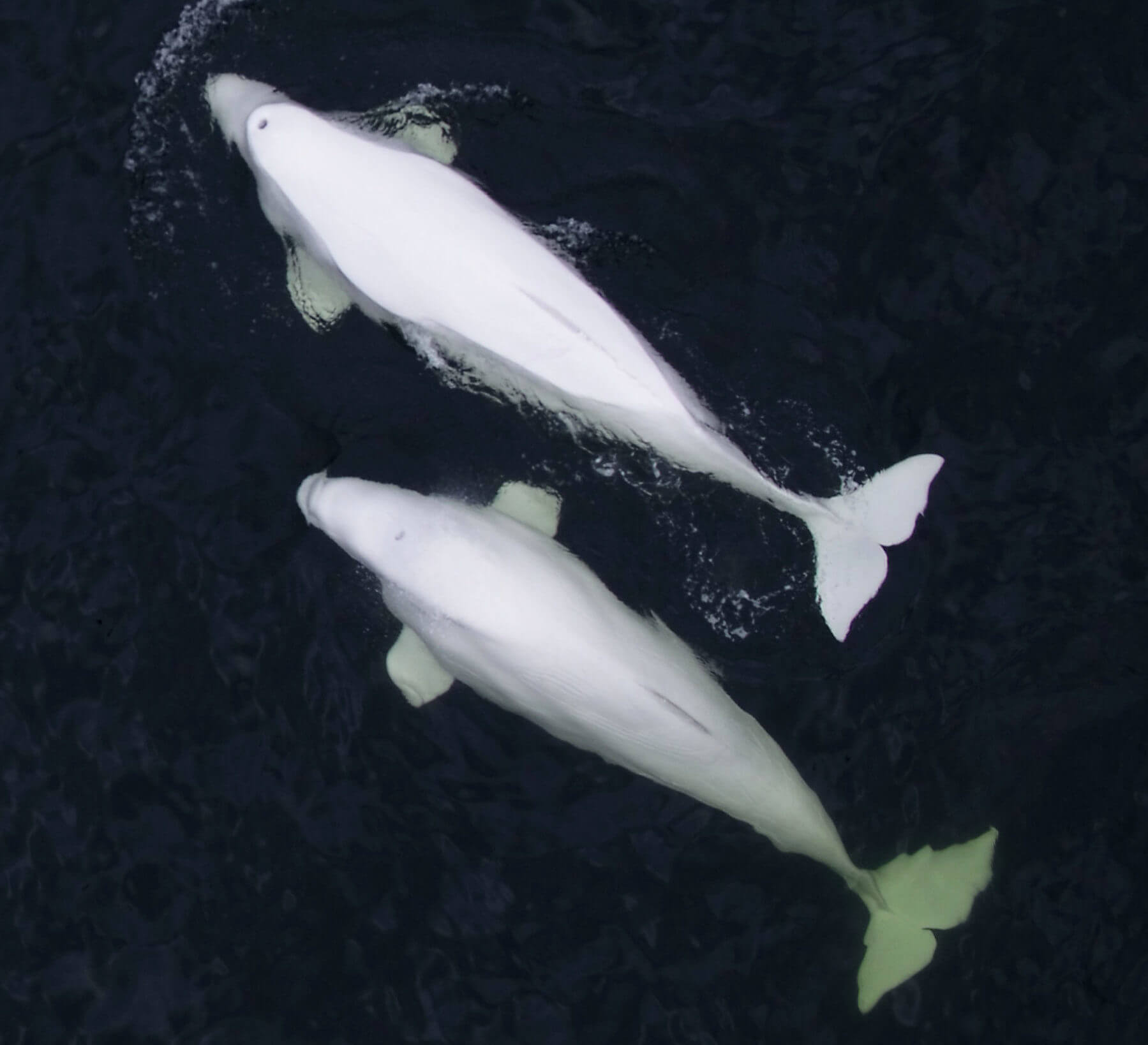Although this technique is already used in other cetacean species – including killer whales and right whales – it is still in its infancy in belugas. In addition to taking carefully-timed pictures of belugas with a drone while positioning the camera directly above them, we also simultaneously strive to shoot photos from the boat of the same group the drone is hovering over while staying parallel to the animals, as per our photo-ID protocol. That is the real challenge of this project, combining photogrammetry with photo-identification. Why combine these two technologies? In order to be able to recognize drone-photographed individuals and thus be able to track the evolution of their condition over time, whether during a single season or over the course of several years. In short, our new objective is to establish a health chart of all St. Lawrence belugas featured in our photo-identification catalogue.
The first few weeks served as a testing period and required a few adjustments, but in the end we got into a groove and managed to overcome this new challenge. And we’ll certainly face new challenges when it comes time to analyze the data! To be continued!
Preliminary identifications of the week:
Dl03 Pascolio
Dl21 Yogi
Dl30 Athéna
Dl45 Trèfle
Dl83 Vita
Dl113 Jetstream
Dl169 Blanchon
Dl173
Dl204 Mirapakon
Dl259 Neige
Dl266 Nics
Dl370
Dl393 Amalena
Dl497
Dl502
Dl512 Marjo
Dl579 Nomi
Dl1500
Dl1508
Dl1757 Blanche
Dl1903 Artsea
Dl1935
Dl1952
Dl2217
Dl9051
Dl9065







